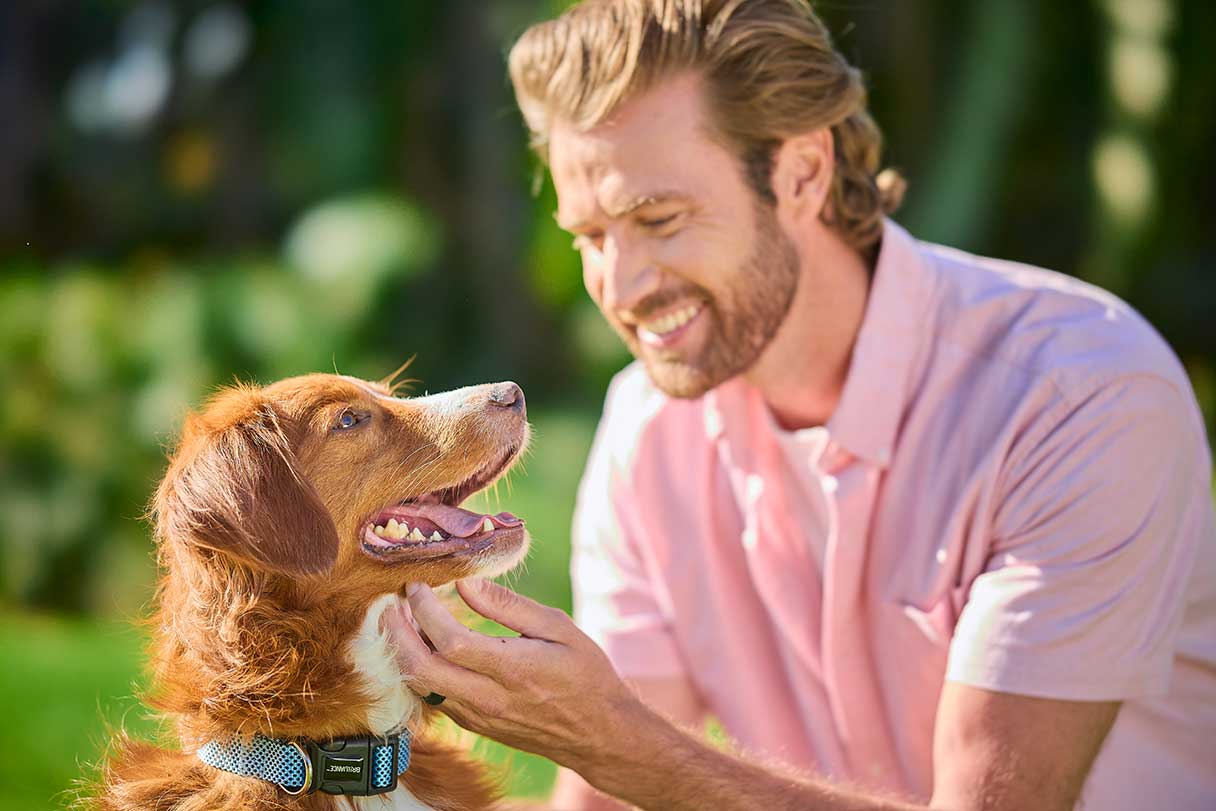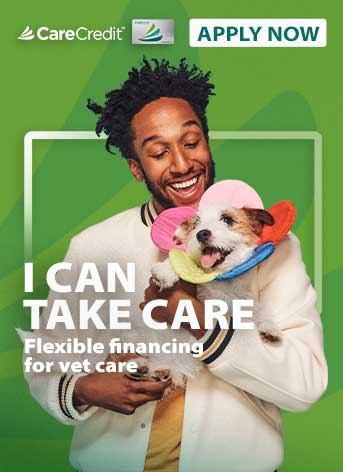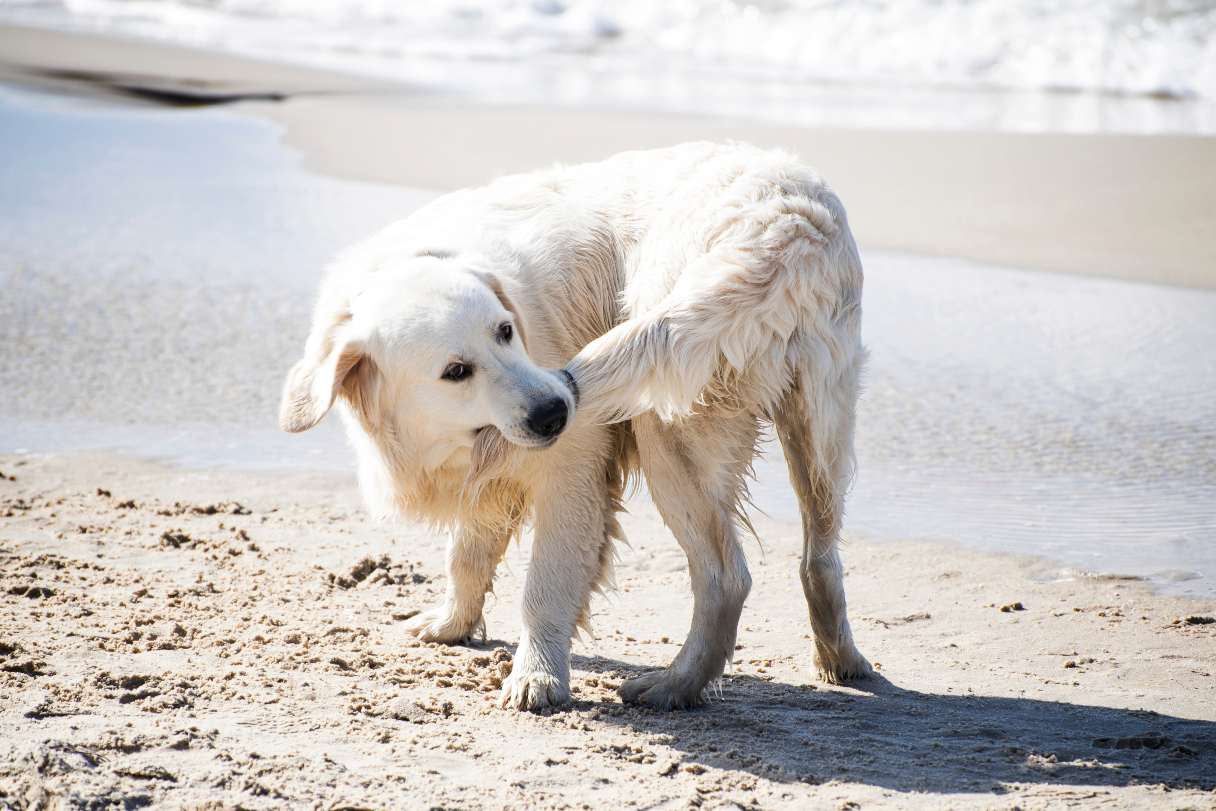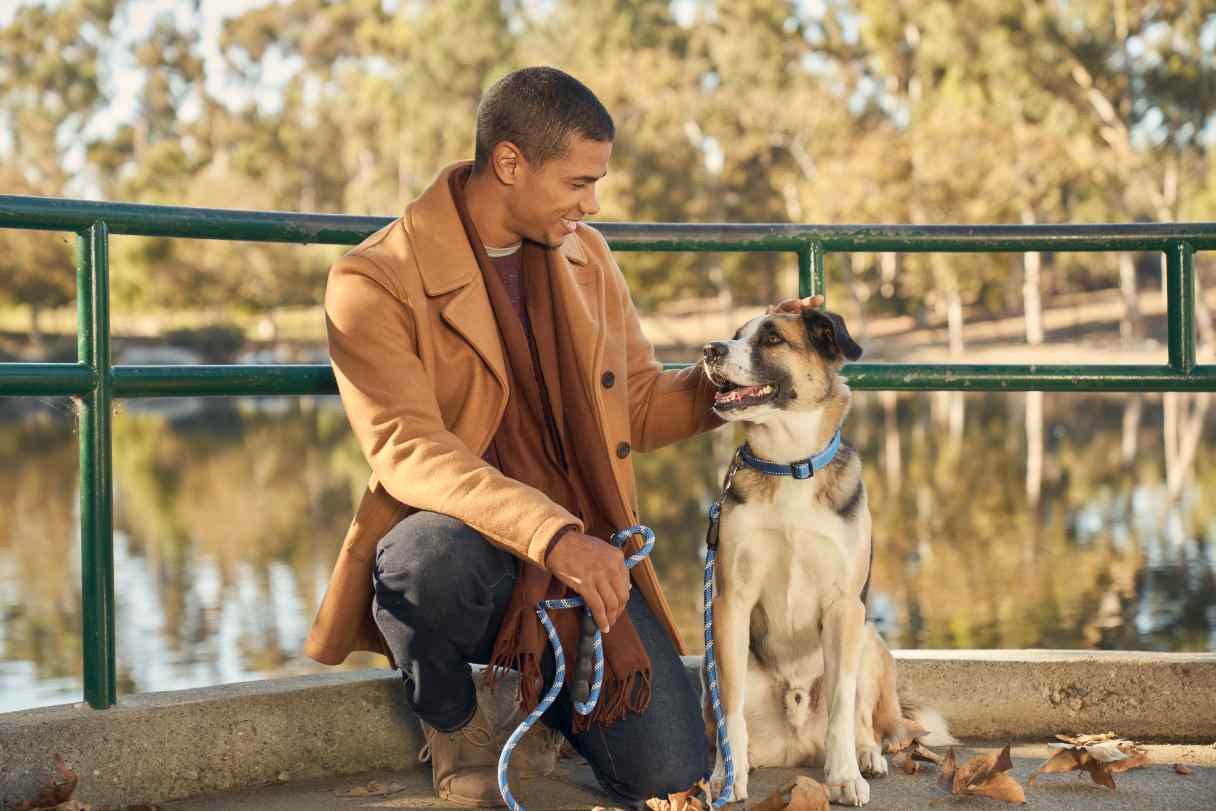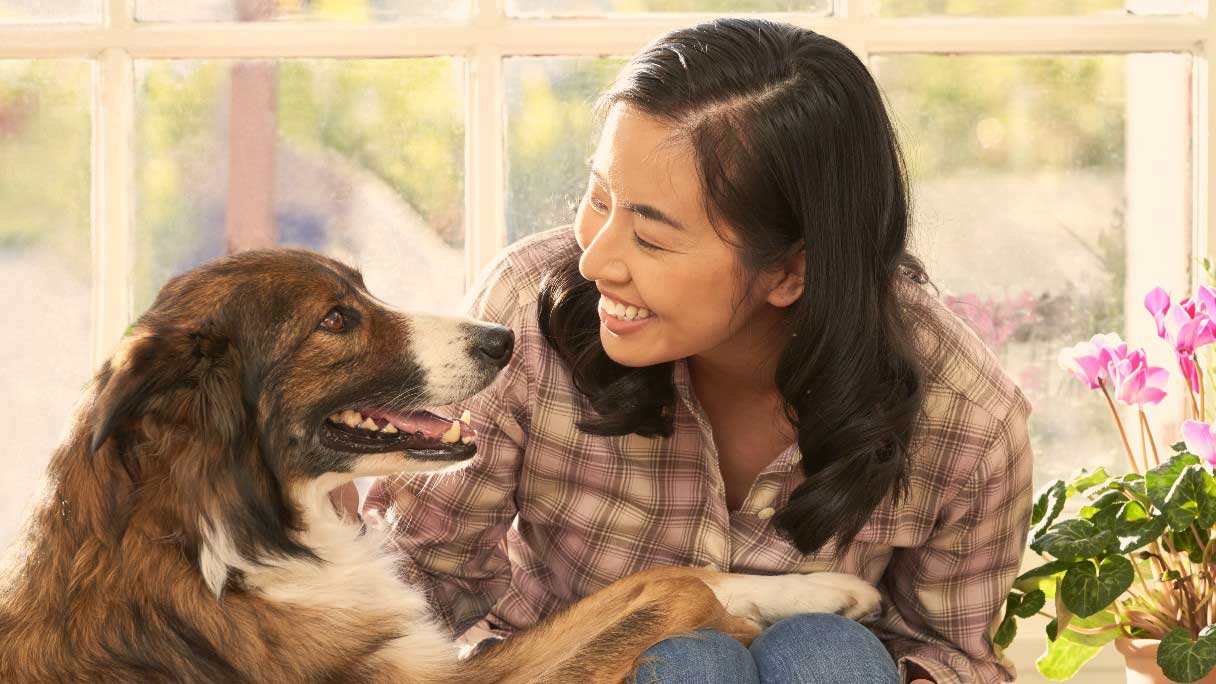Dogs really are our best friends. Did you know that 65 million households own a dog in the United States, 85% of which consider them a part of their family?1 And while pet parents love their pups, the number one reason dogs are rehomed is due to behavioral problems, accounting for 47% of all dogs placed with a new family.2
Like humans, dogs experience a variety of anxiety, trauma and stressors that can manifest themselves as behavioral issues. And sometimes, behavioral issues are simply the result of an illness or miscommunication between dogs and owners. Fortunately, by using the tips below, you can get to the root of these issues and resolve many of these problematic dog behaviors.
1. Separation Anxiety
If your dog is always on their worst behavior when you aren't around, you could be dealing with separation anxiety. Dogs with separation anxiety become emotionally upset when separated from their pet parents. Some dogs may even attempt to escape from your home in an effort to go find you, injuring themselves in the process.
Signs of separation anxiety in a dog usually include several problematic behaviors that only occur when you aren't home, including:3
- Urinating or defecating in the home
- Destructive chewing
- Escape attempts
- Excessive barking
- Pacing the home compulsively
- Ingesting feces (coprophagia)
How to help your dog's separation anxiety
How you deal with your dog's separation anxiety depends on how serious it is. Below are some solutions to help ease your pet's levels of separation anxiety.3
- Give your dog a puzzle toy, lick mat or chew toy — like a Kong — stuffed with peanut butter or cream cheese before you leave home to keep them entertained while you're away.
- Hide kibble around your home to keep your dog busy hunting for their food.
- Enroll your pup in doggy day care so they won't be alone.
- Leave on soft rock or classical music to soothe your dog's nerves.4
- Perform some of the behaviors you usually do before leaving your home at various times of the day, but don't leave. This desensitizes your dog to the cues that you're leaving so they won't tense up when you actually leave.
- Teach your dog to sit and stay in one spot and leave the room for a few seconds. Return and let your dog walk around. Keep doing this for longer periods of time until your dog can sit calmly for at least 90 minutes, which usually indicates that your dog can stay alone for several hours without anxiety.
- Give your dog some treats that contain calming ingredients, such as chamomile, L-tryptophan, CBD oil or melatonin, prior to leaving for the day to help them relax.5
- Speak with your veterinarian to see if medication might help ease your dog's anxiety.
2. Aggression
One of the most serious problems you might encounter with your dog is aggression toward people and other pets. While some dogs are aggressive to strangers due to their protective instincts, others are possessively aggressive and may protect their food and toys if you go near them.6
Signs of aggression in dogs include:6
- Staring
- Lunging
- Growling
- Biting
- Baring their teeth
- Snapping
- Nipping
- Freezing
- Threatening, guttural barks
How to stop your dog's aggression
Don't ignore signs of aggression in dogs toward people or other pets because this behavior can escalate to dangerous levels. There are ways to deal with this issue, including:6
- Visit your veterinarian to rule out a medical issue that might make your dog uncommonly reactive. Your veterinarian may also recommend medication to help calm your dog's aggressive behavior.
- Seek the help of an animal behaviorist or dog trainer, especially if your dog has bitten humans or animals and there seems to be no discernible trigger for the behavior.
- Keep your dog away from other dogs, pets and children if they are aggressive around them.
- Spay or neuter your dog, which may help curb aggressive behaviors.7
- Determine your dog's triggers for aggression and avoid them.
- Provide your dog with basic obedience training if their aggression is mild, such as "sit," "stay," "come" and "leave-it." These commands can help you control your dog around other dogs and people, and even get them to drop items that they are possessive of.8
3. Excessive Barking
Dogs bark for numerous reasons, including fear, boredom, anxiety, to alert you to perceived danger, to get attention and to be social. Pay close attention to determine when and why your dog's barking gets out of hand.9
How to get your dog to stop excessive barking
How you deal with your dog's excessive barking depends on the trigger for it.
- For dogs who seem to bark continuously or at other people and dogs, teach your dog the “quiet" command. Allow your dog two or three barks, say “quiet," gently hold their muzzle or feed your dog a few treats to keep them quiet, repeat the command and let go. If your dog remains quiet, praise and give a treat. Repeat as necessary.10
- Close your drapes or blinds if your dog barks at people and pets walking by.9
- Provide your dog with toys while you're gone, such as lick mats or chew toys filled with treats, to keep them occupied and prevent barking due to boredom.9
- Ignore the barking and only praise your dog when they are quiet in your presence.10
4. Destructive Chewing
Has your dog been chewing everything from your couch to your slippers? Chewing is a natural dog behavior, but boredom, hunger and anxiety are a few triggers that can cause it to get out of hand.11
How to stop your dog from destructive chewing
While puppies tend to chew everything in sight when teething, this behavior should subside after six months of age. For dogs who continue to chew on items when they are older, consider the following:11
- Give your dog a variety of chew toys and treat-filled puzzle toys as an acceptable outlet for chewing.
- Use a deterrent spray on items you don't want to be chewed or move them out of your dog's reach.
- Provide ample exercise and attention, plus a variety of toys to prevent chewing due to boredom.
- If you catch your pooch chewing something they shouldn't, use a simple command like “no," take away the item, replace it with an acceptable chew toy and praise.
5. Destructive Digging
Like chewing, digging is a natural behavior for many breeds of dogs, especially those originally bred to hunt small prey like rodents. But not all dogs will dig up your yard based on their hunting instincts. Other causes of digging include:12
- Being kept outside in very warm temperatures. In these cases, your dog will try to dig a hole to escape the heat.
- Boredom, because your dog has nothing better to do
- Separation anxiety, where your dog is trying to escape your yard and get to you
How to prevent your dog from destructive digging
You can do several things to combat your dog's destructive digging based on the cause of the digging, including:12
- Keep your dog indoors in an air-conditioned space with plenty of water available when the weather is very hot and you aren't there to supervise them.
- Provide your dog with plenty of toys to keep them occupied when they are alone if they "dig" indoors.
- Give your dog a designated digging space in your yard filled with soft dirt or sand near dog-safe plants to indulge their instinct to dig. Bury toys and treats in this area so your dog is more apt to dig there.
- Inhibit your dog's digging with motion-activated sprinklers and chicken wire placed in areas where they regularly dig.
6. Begging for Food
They say beggars can't be choosers, but they can be — your dog can choose not to beg for their food! If your dog regularly begs for food at your dinner table and at parties, it's likely because they are hungry or they know that by begging, they'll get a treat. However, table scraps aren't healthy for dogs and can lead to tummy upset.13
How to stop your dog from begging for food
The best way to get your dog to stop begging is to ignore them when they do. When your dog realizes that begging won't get them treats, they'll stop. Other solutions include:13
- Keeping your dog out of the room while you eat.
- Teaching your dog to go to their crate or a designated spot away from the dining table. Place some toys, especially chew toys filled with something yummy like peanut butter or spray cheese, in the spot to keep them busy.
- Feed your dog at the same time you are eating in an area away from the table.
7. Leash Pulling
Does your dog pull you along at record speeds while on walks? They could be tempted to follow an interesting scent or just be having a spurt of pent-up energy. And by pulling on their leash, they get to whatever destination they want faster.14
But leash pulling is not only an unpleasant behavior for you to deal with, it can potentially injure your dog's neck if they pull too hard on their leash.
How to leash-train your dog
To stop your dog from dragging you along on walks, there are several things you can do.14
- Walk your dog with a chest-led harness to help prevent pulling.
- Stop walking when your dog starts to pull on the lead. Once your dog is calm, resume the walk.
- Walk in a different direction when your dog starts to pull on the leash so they learn that pulling doesn't get them to where they want to go.
- Reward your dog with treats and praise when your dog walks by your side.
- Let your dog stop and smell the roses and other interesting scents during walks when they are not pulling on their leash.
8. Jumping
Does your dog greet you and your guests by jumping all over them with excitement? While this may seem sweet, it can be pretty unpleasant, especially with larger dogs whose excitement could knock you or someone else, like a small child or elderly adult, over.
How to prevent your dog from jumping on people
To get your overly excited pup to stop jumping on you and others, you can take the following steps:15
- Turn around and ignore your dog when they start jumping on you. This teaches your dog that jumping on you won't get them attention and love.
- Throw treats on the ground for your dog to eat when they greet you or a friend to keep their paws on the ground. Repeat this process, allowing your dog to first make the greeting with no signs of jumping and then treat them.
- Give your dog the "sit" command prior to allowing them to greet anyone. Once they are sitting and greeting someone politely, give them plenty of treats as a reward. If at any point they stand, ignore them and start again.
9. House Soiling
No one likes coming home to puddles of pee and piles of poo around the home, but house soiling has many causes, including medical issues. It could even be because you're not giving your dog enough potty breaks during the day.16
How to potty train your dog
While some dogs soil the house because of incomplete house training, others may be dealing with a medical issue.16 Here are some things to consider when it comes to potty training your dog:
- Visit a veterinarian to rule out a medical condition, such as a urinary tract infection, as the cause of your dog's house soiling, especially if this behavior is recent.
- Allow your dog access to the outdoors through a dog door, or set up an indoor potty spot if you are gone for most of the day.
- Have a dog walker come by to give your dog a walk or two while you are gone, ensuring they have plenty of potty breaks.
- While at home with your dog, keep them on a long lead so they can't sneak off to go potty in a corner. If you notice any behaviors like sniffing, circling or squatting, quickly walk your dog to their designated potty spot.
- Take your dog out 15 to 20 minutes after meals, first thing in the morning, before bedtime and during the middle of the day. These are the most likely times they'll need to go potty.
- Praise and treat your dog when they successfully go potty outside or in a designated indoor potty spot.
10. Fears and Phobias
Just like people, dogs can develop fears and phobias of everything from strangers to loud sounds like fireworks, especially if they weren't properly socialized in their first three months of life or experienced previous trauma.
Signs that your dog may have a fear or phobia include:17
- Hiding
- Running away
- Cowering
- Tucking their tail between their legs
- Shivering
- Freezing in place
- Displaying aggressive behaviors like growling, snapping and biting
- Looking away
- Fidgeting
- Panting
How to ease your pet's fears, phobias and anxiety
With some gentle reassurance and rewards, you can help your dog overcome many of their fears and phobias. But sometimes, in severe cases, your vet may need to intervene.17 Solutions you can try include:
- Avoid whatever is causing your dog's fears. For example, if your dog is afraid of the vacuum, only vacuum with your dog in another room.
- Play soothing music or use a white noise machine to drown out frightening sounds like fireworks or thunder.18
- Use a calming wrap to keep your dog relaxed prior to stressful situations that could induce fear.18
- Have friends and family come over and immediately treat your dog when meeting them if they have a fear of new people or strangers.
- Visit your veterinarian to see if medication can help calm your dog.
- Use a calming dog pheromone spray or diffuser in your home to provide a tranquil atmosphere and ease your dog's fears during events like thunderstorms.18
- Give your dog a quiet "safe space" to retreat to if they become overwhelmed by guests at parties or during loud celebrations.
11. Hyperactivity
Does it seem like your dog is bouncing off the walls all the time? This type of behavior can be annoying to owners, especially at night when all you want is to get some sleep. But remember, dogs need exercise, and if they aren't getting it, they'll burn off that energy by running around your home, appearing hyperactive.19
How to calm your hyperactive dog
All dogs need an outlet for pent-up energy, especially high-energy and working breeds.19 You can:
- Take your pup to the dog park where they can run around and get out all of that energy. Or, allow your dog to run free in your yard and play an active game of fetch at least once a day.
- Enroll your dog in doggy day care to give them a chance to run around and play all day so they will settle down at night.
- Enter your dog in agility contests or sporting events for dogs, such as flyball, herding, obedience or dock diving.
- Play soothing music before bedtime to encourage your dog to relax.18
Tips for Dealing With Behavioral Problems in Dogs
Dogs do a lot of things that seem strange and may leave you scratching your head, but when those behaviors become problematic, it's time to take action. Some things to consider when dealing with canine behavioral issues are:
- Always use positive training methods and never punish your dog for bad behavior. Not only will punishment frighten your dog, it can also lead to increased issues with aggression, fear, house soiling and separation anxiety.20
- Ignoring the behavior you don't want and rewarding the behavior you do want helps with the counterconditioning of a variety of problematic behaviors.
- Giving your dog the appropriate amount of exercise for their size and breed is one of the key factors to stop many problematic behaviors.
- Providing ways for your dog to do the right thing — like giving them free access to a designated potty spot or acceptable chew toys — can go a long way in resolving behavioral issues, such as house soiling and destructive chewing.20
- Using training aids like calming treats, relaxing music and calming dog pheromones as aromatherapy, along with positive reinforcement and training, can help resolve behavioral issues.
Dealing with problematic behaviors sooner rather than later will keep them from escalating and will help you and your dog bond while using positive training methods to resolve them. Plus, not having to deal with behavioral issues leaves you more quality time to spend with your four-legged best buddy.
CareCredit Credit Card Financing for Dogs
Taking good care of your pet's well-being from nose to tail is essential. Make sure to stay up to date on their regular checkups at the vet to help keep your pet happy and healthy for a lifetime of love. You can use your CareCredit credit card for pet care throughout the year for routine veterinary services as well as emergencies and surgeries.* Apply today and use our Acceptance Locator to find a veterinarian near you that accepts CareCredit.
CareCredit is there for you and your pet every step of the way; continue your wellness journey by downloading the CareCredit Mobile App to manage your account, find a provider on the go, and easily access the Well U hub for more great articles, podcasts, and videos.
Author Bio
Susan Paretts is a freelance writer with 18 years of experience covering health and wellness, pet care, and more. Her work has been published by the American Kennel Club, Bayer Animal Health, Elanco, LIVESTRONG.com, The San Francisco Chronicle, Chewy, and more.



